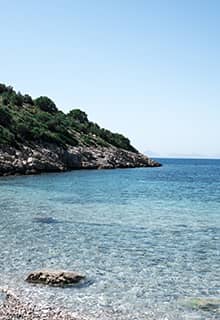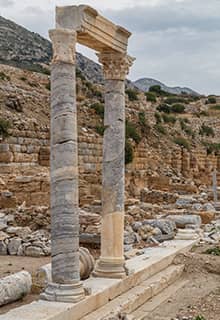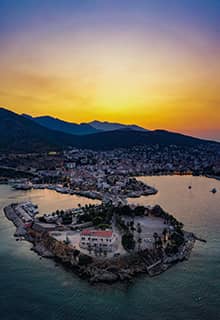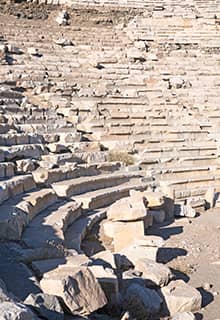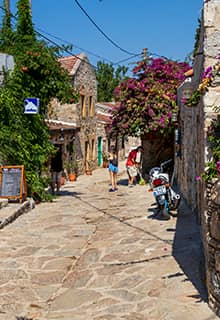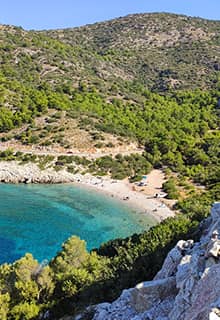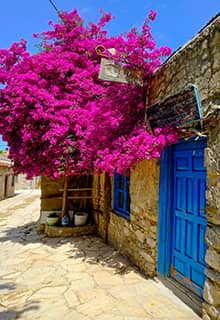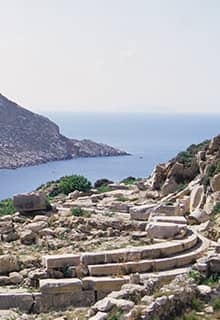

see
Datça
The Ancient City of Knidos
Human settlement in Datça dates back to 2000 BC. Traces of the Carians, the first settlers in the area, and the civilizations that followed such as the Lydians, Persians, Romans, and Byzantines can be seen all around. The ancient city of Knidos, located on the western tip of the Datça (Reşadiye) Peninsula, is the region’s tiny gem, and one of its most beautiful and significant sites. It’s one-hour drive from the town of Datça along a winding and scenic road that will make the trip a pleasant adventure.
Throughout centuries, the site of the ancient city has been a shelter and a safe harbor for ships traveling on trade routes. Once home to the statue of Aphrodite of Knidos, the work of Praxiteles and one of the most important works in the history of art, the city dates back to the 8th century BC. In antiquity, this was a hub of science, arts, and architecture, and it drew its life force from the sea. Today, notable remains include the round Temple of Aphrodite, floor mosaics, and the amphitheater overlooking the sea.
It is a good idea to wait for the sunset in Knidos. The warm glow of the sun on these ancient ruins and the breathtaking scenery make a very dramatic setting.
Discover the Town: Old and New
Datça town consists of three parts: Old Datça, New Datça, and the coves dotting the Datça Peninsula. New Datça, situated on the southern shore, is the main settlement and it is also where the town’s heart beats. Here you can find a myriad of hotels, restaurants, cafés, and bars along the shore which is called “Sevgi Yolu” (Path of Love). Another surprise in new Datça is Lake Ilıca, a small freshwater lake filled with fish and ducks. Situated in the middle of Sevgi Yolu, this lake, also known as the “Byzantine Pool”, is believed to have therapeutic waters.
To further explore this charming town, head to Old Datça, where cobblestone streets and historic stone houses are adorned by colorful bougainvillea. Old Datça (Eski Datça) is inland, situated on the hills above town. It is a charming village, which has recently gone through a major renovation effort. Old Datça is renowned for its old stone houses, many of which have been restored and turned into boutique hotels, quaint cafés, bars, and stores dedicated to local handicrafts. Visitors should definitely spend some time walking around Old Datça, exploring its cobblestone streets, colorful bougainvillea, small shops, and friendly locals. As you walk past the house where famous Turkish poet Can Yücel lived and died, you will better understand his long love affair with this beautiful town.
Datça Almond Flower Festival
Almond trees with white flowers blooming in January and February, herald the coming of spring. The times when almond flowers meet daisies are the most exciting times in Datça. The Almond Flower Festival (Badem Çiçeği Festivali) is a great opportunity to witness the magnificence of Datça. Breathe in the fresh air, far away from the city, return to nature, and experience some of Datça’s unique flavors.

